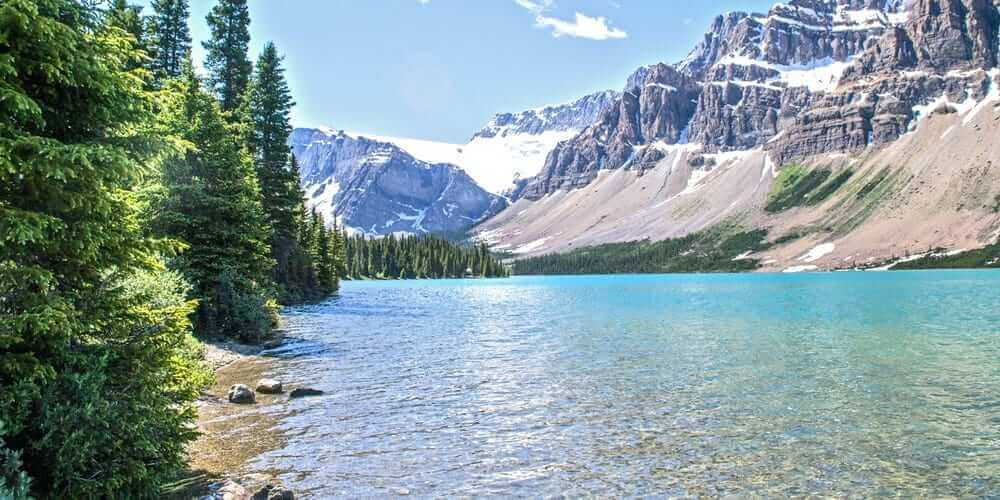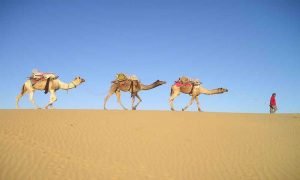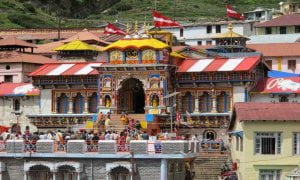Tourism is one of the biggest and fastest growing sectors in the global economy and has significant environmental, socio-cultural and economic impact on a destination. Understanding the environmental impacts, it is crucial for the future of tourism in any part of the world to assess environmental impact of tourism.
Due to movement of tourists, both man-made and natural resources are utilized by the tourists as well as industry stakeholders thus resulting in negative impacts. It has been found that developed countries have resources to mitigate the negative impacts but developing nations continue to face challenges of regulating negative impacts. India is known for its natural resources and with tourism, the country is blessed with several national parks and protected areas with rare species of flora and fauna.
Also read more on Transportation in India

This has resulted in increased environmental impacts due to over developed tourist attractions. Moreover, it is widely recognized that there is no “zero-impact” tourism and that, it being an alternative form of development, has its unique impacts on the environment. Impacts can be both positive and negative.
You may interested to know about Travel Agents and Tour Operators
Environmental Impact of Tourism
Pristine natural resources and environment have always been the critical requirements of successful tourism. Tourists look for attractive natural sources, tourism activities and the like. The relationship between tourism and environment has crossed four stages over the years since its inception:
Stage 1: Coexistence between tourism activities and environment with minimal impact
Stage 2: Mass tourism led to destruction of nature
Stage 3: Symbiosis between tourism and environment by developing “green tourism”
Read more about Tourism Economics
This also results in withdrawal of agricultural farmers, as well as changes in land patterns. As the environmental impacts are obvious, several measures have been taken to reduce its impact on the destination. But, it is also a fact that tourism has the potential to create beneficial effects on the environment by contributing to environmental protection and conservation.
Basically, three categories of negative impacts are discussed: Direct impact, Physical impacts of tourism development and Physical impacts on tourism activities. In addition, positive impacts are also discussed.
Stage 4: Different approaches to development that put in balance the needs of the tourists, the locals and the environment
While differences exist as to the degree of intensity that results in environmental problems, it is generally agreed that unregulated tourism would result in the destruction of forests, pollution, over-crowding, ecological balance, and endangered diversity of the nature, flora and fauna, spillover of garbage trails, overburdens of environment with tourist structures and roads and natural hazards.
Also read more on Transportation in India
Impact Areas
Environmental impacts by tourism may broadly be divided into two types:
Positive and Negative Impact.
1. Negative Impacts
1.1. Direct Impact: It has direct effects on the environment of the destination. Some of these are enumerated below:
a) Tourist Movements: When a tourist wades out in beach, large portions of the coral and fish life around the boat jetties are killed. Souvenir trade like shells, shell jewelry etc is done by the removal of life forms. This could be seen in Lakshadweep where trampling of shallow water corals is common.
b) Dumping of Solid Waste: Littering of plastic, cans, bottles, poly- ethylene, eatables, leaflets, coconut wastes etc are a common sight in many islands and beaches. Added to it, dumping of human waste and defection is a major problem in many beaches.
Do you know about Travel Motivation?
Oil spillage by motor boats and ships while transporting tourists is another problem. In mountain areas, trekking tourists generate a great deal of waste. They leave behind garbage, oxygen cylinders and even camping materials.
c) Deforestation: It has been a trend to clear forests in order to develop resorts, hotels, fishing farms, lying lines of transport and the like in order to cater to tourist interests. This has created havoc in the ecosystem. For example, in Andaman and Nicobar Islands, evergreen tropical forests were cleared for the timber factory thus exposing the land to sunlight and reducing ground water.
Read more about Tourism Economics
Rich forested slopes have been converted into barrier rocks in the name of development activities like roads, hotels, tourist huts and trekking trails.
d) Water Pollution: It has been found that there is a drastic decline of coral reefs due to the sewage water directly being released into rivers, oceans and the like. Construction of buildings along the coastline has altered the patterns of sand movement.
Global warming caused by tourism activity leads to rising in sea temperatures. It is also found that there is increased pressure in sewage treatment plants that overflows due to heavy tourist activity. In addition, discharge of sewage into water bodies due to recreational boating and cruises have lead to the destruction of shell-fish locations.
You may interested to know about Travel Agents and Tour Operators
f) Wildlife: This accounts for 10% of the international tourism. The main impacts of tourism are disruption in the feeding and breeding pattern of animals. It also alters their eating habits. Feeding patterns of wildlife is indirectly affected by littering as they eat the waste.
Dal Lake in Srinagar is heavily polluted and weeded due to the release of an incredible amount of fecal matter and pathogenic materials from house boats.
Also read more on Transportation in India
e) Mountains: They account for 15-20% of world tourism. Some of the environmental problems include trail degradation, deposition of rubbish along the trails, deforestation due to excessive firewood use and traffic emissions of nitrogen oxides, hydrocarbons and lead.
The habitat is also altered by tourists trampling and using of off road vehicles (ORVs). Some of the factors that contribute to the wildlife variations include difference in breeding seasons and behaviors, lifecycle, maturity, alarm behaviors and ecological niche competition. Wildlife can be adversely affected by the construction and maintenance of tourist infrastructure and by tourist activities.
Read more about Tourism Economics
g) Climate Change: Climate scientists have generally agreed that earth temperature has increased due to the green house gases. CO2 is generated with the fossil fuels such as coal, oil and natural gas or due to changes in landscape, through deforestation.
In the long-run, accumulation of CO in the atmosphere can cause global climate change. Air travel such as passenger jets is also a major contributor to the green house effects.
h) Air Pollution: Most of the tourism related air pollution come from automobiles. Due to the increase in transportation, number of tourists has been increasing thus causing increased air pollution. One consequence of this is increase in air transport.
Read more about Tourism Economics
Tourism accounts for more than 60% of air travel and is responsible for an important share of air emissions. Added to it automobiles emit carbon monoxide.
i) Noise Pollution: Noise pollution from airlines, cars and buses as well as recreational vehicles such as snowmobiles and jet skis is a problem of modern life. It increases stress and even hearing loss for humans, it causes distress to wildlife especially in sensitive areas.
You may interested to know about Travel Agents and Tour Operators
j) Aesthetic and Cultural Impacts: Tourism can reduce the aesthetic appearance of destination due to high rise buildings, creating visual pollution. For example, due to high rise hotels in Jerusalem, it has damaged cities with architectural beauty.
k) Impact on Local communities: Due to tourism activities, the character of the local people may get altered. The cultural and aesthetic aspects of these communities may be shattered due to the development of tourist activity.
l) Depletion of Ozone Layer: The ozone layer that absorbs harmful ultra violet(UV) rays is located at an altitude 12-50 kms in the upper atmosphere, thus protecting earth. The tourism industry could cause direct impact, due to the construction of new developments for tourists.
Do you know about Travel Motivation?
Refrigerators, air-conditioners and propellers in aerosol spray cars, amongst others are widely used by hotel and tourism industry, which may cause depletion in ozone layer.
1.2. Physical Impacts: Attractive landscape sites, such as sandy beaches, lakes, riversides and mountain tops and slopes are characterized by species-rich ecosystem. Physical impacts include the degradation of ecosystem. Ecosystem is most threatened with degradation at ecologically fragile areas such as alpine region, rainforests, wetlands, mangroves, coral reefs and sea grass beds.
Read more about Tourism Economics
Threats and pressure on these ecosystems are often severe because such places are very attractive to both tourists and tourism developers.
1.2.1. Physical Impacts of Tourism Development
a) Construction Activities and Infrastructure Development: The development of tourism facilities such as accommodation, water supplies, restaurants and recreation facilities can lead to sand mining in beaches causing sand erosion. Road and airport construction can lead to land degradation and loss of wildlife habits and deterioration of scenery.
Do you know about Travel Motivation?
b. Deforestation and Intensified or Unsustainable Use of Land: In order to construct ski-resorts, accommodation and the like, constantly forests are cleared. Even coastal wetlands are often drained and filled when there is a lack of suitable sites for construction of tourism facilities and infrastructure.
c. Marine Development: Over building and expensive paving of shorlines can result in the destruction of habitats and disruption of land-sea connection (such as seaturtle nesting spots). Shoreline development, increased sediments in the water, trampling by tourists and divers, ship groundings, pollution from sewage, over fishing and fishing with poisons and explosives destroy the coral island.
You may interested to know about Travel Agents and Tour Operators
d. Hazard Introduction Effect: Introduction of hazardous weeds, predators and diseases could affect the natural environment. Tourists may also introduce hazards from negative behaviors such as fuel leakage or disposal, soap chemicals from washing, littering and the like.
e. Infrastructural Development: Building up of resorts, hotels, laying down of transport and communication, setting up of golf courses, eating joints and the like in a destination does hamper the ecosystem.
Read more about Tourism Economics
1.2.2. Physical Impacts from Tourist Activities
Using the same trial over and over by the tourists while trekking, trample vegetation and soil, causing damage which could lead to the loss of biodiversity. This is high in places where visitors take trials frequently. Anchoring, snorkeling, sport fishing and scuba diving, yachting and cruising are some of the activities that cause direct degradation of marine ecosystems such as coral reefs and causes subsequent impact on coastal protection fisheries.
a) Hiking, Snorkeling and Diving: Snorkeling and diving cause damage to corals under the sea, which is a source of existence for under water species.
Do you know about Travel Motivation?
b) Tourist Activities within National Parks: Due to heavy visitor and traffic congestion, many tourist destinations have been greatly impacted by this problem. It could also affect and vandalize sites of cultural significance. Damage to cultural resources is more dangerous and with passage of time, it could affect the natural resources.
c) Recreational Boating: The most significant problem with this activity is dumping of sewage into water bodies thus flushing shell fish beds. Sewage is directly dumped into sea by several cruises, which contains pathogens thus adversely affecting human health and endanger species inside water.
You may interested to know about Travel Agents and Tour Operators
Diseases could be potentially transmitted through contact with human fecal discharge and / or ingestion thus contaminating shell fish, causing an increase in diseases like typhoid fever, dysentery, infections hepatitis etc.
d) Water and Adventure Sports: Scuba diving, deep sea diving, snorkeling etc if done on a massive scale will affect marine ecosystems. Marine life is also disturbed by high speed cruising tourist boats. For example, snorkeling is taking toll on the corals of Lakshadweep.
Golf courses with rolling turfs, engaging waterways, sandy stretches and rimmed tries are typical examples of “deceptive greens” affecting the local biodiversity.
Water sports involving diesel powered speed boats and motor boats contribute to the surface water pollution in many areas. Mountain sports like trekking, skiing etc are producing many un-desirous results.
Read more about Tourism Economics
2. Positive Impacts
Despite its many adverse impacts, tourism can have positive impacts on both natural and artificially constructed environments as well as on destination communities. Tourism has motivated the preservation of sensitive ecosystems. It focuses on cultural and historic sites that could be the impetus for the preservation and rehabilitation of existing historic sites, buildings and monuments.
In addition, the economic benefits of tourism partially balance the negative environmental impacts. Local communities in and around the national parks are benefited by the income that they get from tourism. The parks attract more visitors to these communities, resulting in increased employment opportunities and an improved standard of living.
Also read more on Transportation in India
3. Upstream and Downstream Impacts
Hotels can exert “upstream” influence on its suppliers to provide products that minimize environmental impacts through supplier relations. Similarly travel services such as tour operators can have “downstream” impacts by influencing tourists through education and provision of option to reduce resource use.
For example, hotels can give guests the option not to have their linens washed daily and cruise lines can limit the number of tourists that go ashore to a sensitive destination. Downstream influence through tourism education could be an attempt towards reducing the impact on environment. In addition, tour operators specializing in ecotourism can influence their customers through the provision of environmental guidelines before and during trips.
Do you know about Travel Motivation?
Global Efforts to Mitigate Environmental Impacts of Tourism
Several efforts in various directions have been taken by organizations globally to mitigate environmental impacts of tourism.
Read more about Tourism Economics
1. Government Efforts: It was as early as 1940s that the World Union of Conservation of Natural Resources were constituted to conserve nature and natural resources in order to promote active conservation and planned use of location with indispensable features. In the late 1950s, the International Union of Official Travel Organizations (IUOTO) which later on became World Tourism Organization (WTO) in 1979 developed an environmental policy. IUOTO policy on the environment was formulated during the 22nd General Assembly held in Ankara (Turkey) in 1971. It encompassed the need for 1) integration of environmental protection in physical planning policies,
2) dealing with the issue of tourist capital protection at the global level,
3) uniformity in national environmental practices and 4) setting up of an inventory of tourism resources. In addition, policy was developed that provided guidelines for resort development which required the planning by a multi-disciplinary team of experts. An environment Committee by WTO was established by holding World Tourism Conference in Manila in 1980.
You may interested to know about Travel Agents and Tour Operators
2. Tourism Industry Initiatives: Unlike other industries, tourism and travel industry has preferred self-regulation to government regulations. A 20-page Environmental Operations Manual 1991 was developed that has a 134 points checklist to evaluate conservation, waste management and air-emissions amongst others. The policy is based on “reduce, reuse and recycle” principle and encourages hotels and resorts to choose that are least damaging to the environment.
Steps to Lessen Adverse Impacts:
As environmental impacts of tourism have become more obvious, efforts to minimize and avoid further impacts have been developed.
1. Voluntary Efforts by Industry Sectors and Government Initiatives: The WTTC developed a “Green Globe” programme which travel and tourism companies can make improvements in their environmental policies. In 1991, WTTC published “Environmental Guidelines” which was accepted by Green Globe Board. Also in addition, several attempts were made to regulate tourism by way of legislation that enacted by Government of Goa on physical pollution of beaches.
Do you know about Travel Motivation?
2. Non-Profit Groups: Several NGOs have come up with innovative ideas to protect environment from impacts of tourism. The Audobon Society has developed a “Travel Ethic” for tour operations that provide wilderness trip. This has the potential for reducing adverse impact on tourism.
Again, the World Wildlife Fund (WWF) sponsors tourism activities to support conservation. It also attempts to minimize the environmental impacts of their trips by selecting commercial tour operators according to their reputation as environment friendly.
Also read more on Transportation in India
3. Financial Contributions: Tourism can contribute directly to conserve sensitive areas and habitat. Revenue from park entrance fees and similar sources could be used for the protection and management of environmentally sensitive areas. Special fees for park operations or conservation activities can be allocated for tourists or tour-operators.
User fees, income taxes, taxes on sales or rental of recreation equipment and license fees for activities such as hunting and fishing can provide governments with the funds needed to manage natural resources. Such funds can be used for overall conservation programmes and activities such as park ranger salaries and park maintenance.
Read more about Tourism Economics
4. Improved Environmental Management Planning: Planning early for tourism development could help in reducing mistakes. It can help in avoiding the gradual deterioration of environmental assets significant to tourism.
Green building using energy efficient and non-polluting construction materials, sewage systems and energy sources is an increasingly important way for the tourism industry to decrease its impact on the environment. Pollution prevention and waste minimization techniques are especially important for the tourism industry.
Do you know about Travel Motivation?
5. Environmental Awareness Rising: The tourism industry can play a key role in providing environmental information and raising awareness among tourists of the environmental consequences of their actions.
6. Protection and Preservation: Several wildlife resources have enacted strict laws protecting animals that draw nature loving tourists. As a result of this, endangered species have thrived again.
You may interested to know about Travel Agents and Tour Operators
7. Regulatory Measures: Regulatory measures i.e. control the number of tourist activities and movement of visitors within protected area, could help maintain the integrity and validity of the site. Limits should be established through an in-depth analysis and long-term planning.
Such plans should be implemented in tandem or work in collaboration with area of development or regional plans or components of national park. Local cultures and traditions should be taken into account and attempt should be made to promote local ownership and management of programmes and projects.
Read more about Tourism Economics
Tourist traffic should be limited according to the carrying capacity of the region. Environmental Impact Assessment (EIA) and Environmental Audits could be a possible legal mechanism of such a plan. Awareness programs and tourist sensitization of the local socio-economic environments should be undertaken.





